Why wear a mask?
There is a large body of evidence that masks/respirators are effective in reducing the transmission of respiratory infections, including COVID-19. This site uses the term mask, but is referring at all times to a respirator that is able to filter COVID-19 particles.
There is also growing evidence that COVID-19 infections are detrimental to many parts and systems of the body, and that there are increased risks of heightened damage or negative effects with reinfection. COVID-19 can infect you even if you have been vaccinated, and reinfection can occur soon after a previous bout.
Wearing a mask is a simple way to greatly reduce the risk of getting COVID, even if in the presence of someone who is or may be infectious.
What mask is best for me?
The best mask is one that you are able to wear and that you have with you when you need it.
If you are able to put some preparation and trial in, it can be good to find a mask that fits and is comfortable for you – different people will find different models of masks more or less comfortable.
Some people find ear loop or head loop masks more comfortable, or find it easier to breathe in different shaped masks.
Filtration
Different masks are labelled with a rating based on the type of mask and their filter performance. For example, a mask labelled N95 must have a filter performance of ≥95%.
Because each country has its own certification standard for masks, you may find masks that have a similar performance rated “differently”, ie. N95 and KN95.
| Type | Filtration efficacy | Filters COVID particles | Certifying area |
|---|---|---|---|
| P1 | 80% | No | AU/NZ |
| P2 | 94% | Yes | AU/NZ |
| P3 | 99.95% | Yes | AU/NZ |
| N95 | 95% | Yes | US/CA |
| KN95 | 95% | Yes | National Chinese standards |
| KF94 | 94% | Yes | South Korea |
| Korea 1st Class | 94% | Yes | South Korea |
Mask shape
The shape of the mask comes from how it was made. Different shapes may feel more comfortable or fit better than others, and a well-fitting mask will be the most effective barrier.
The table below illustrates different shapes and the names that are used for them across this site.
| Illustration | Shape | Description |
|---|---|---|
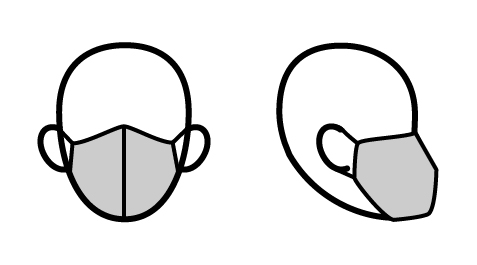 |
Cloth mask | Face mask made from cloth or other fabric. Not able to be given a rating. |
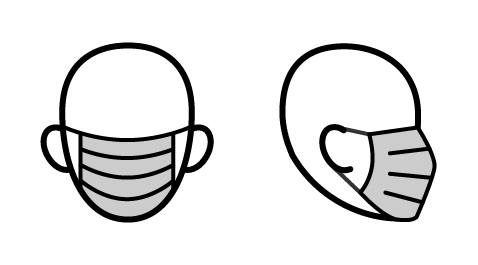 |
"Surgical mask" | Commonly blue, light mask with expanding front section. Not recommended for adequate protection from COVID-19, but better than no mask. |
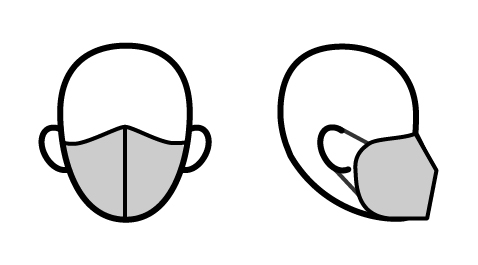 |
Axe | Two panels with front seam. |
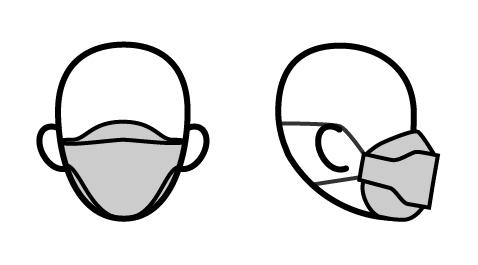 |
Fish | Three panels joined horizontally. |
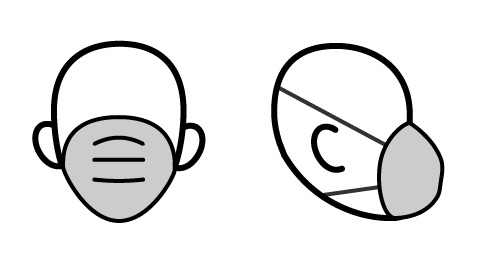 |
Cup | Moulded cup shape with no visible joins on mask. |
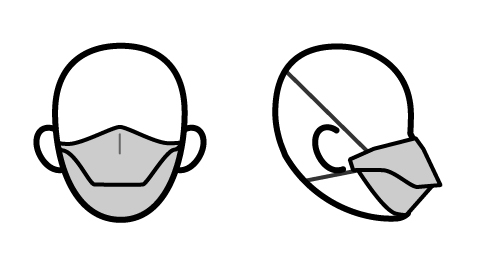 |
Duckbill | Two panels joined horizontally at front, often with nose ridge. |
Loop styles
Masks are manufacturered with either two loops on the sides that wrap around the ears, or longer loops that wrap around the back of the head.
Like mask shape, pick the style that is most comfortable and provides the best fit. Some people find one or the other style can be less comfortable for long periods of time, but that it can be helped by wrapping the bands with a soft cover or a device like this one.
Valves
Some masks have a valve on them which allows air to pass through them in one direction (ie. from the inside to the outside). These are designed to make breathing easier for the person wearing the mask, but allow particles to move from the wearer to the outside of the mask.
Because of this, while valved masks are effective at preventing the wearer from getting a respiratory infection, they can be less effective in preventing the spread of infection.